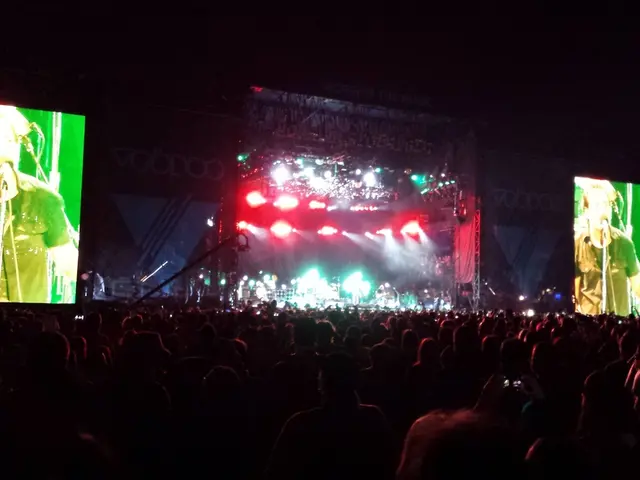Collaborative Steps - Mutual Actions - Intersecting Paths
Article:
Navigating the friendly skies involves more than just pushing buttons and flipping switches. There's a whole world of behind-the-scenes jargon that keeps us all safe and sound. Today, let's unravel the mysteries around "same track," "reciprocal track," and "crossing track" - the three defining positions of planes relative to each other.
Same track: When planes follow the same route, almost like a boogie with the odd 45-degree twist or more than 315-degree turn. Think of it as being 'in step' with your dancing partner but on a moving runway.
Reciprocal track: Here, planes go in opposite directions, like ping-pong balls bouncing off each other. This occurs when there's an angular difference of 135° to 225°. Imagine standing on a seesaw with a friend, though you're both likely to be a fair distance apart to avoid tipping over.
Crossing track: Planes cross paths, meeting at a point like two rivers joining together. This happens with an angle of 45° to 135° and less than 135° on either side. It's like playing an intense game of chicken while maintaining enough space so as not to collide.
Why the Track Talk?
The distinctions between plane tracks are pivotal in ensuring safe and efficient air traffic control operations. These definitions directly impact how controllers allocate safe distances between aircraft. For example, planes on reciprocal tracks (135° to 225° apart) are more at risk of head-on collisions, necessitating increased vertical or longitudinal separation, especially in procedures like oceanic airspace. Similarly, crossing tracks demand precise timing and altitude assignments to avoid intersection collisions. By categorizing aircraft based on their track angles, controllers can implement suitable separation minima and predict potential conflicts, even in non-radar or high-density traffic conditions.
In Action: Track Definitions in the Real World
Track definitions take center stage in practical air travel operations, particularly in radar-less zones such as the North Atlantic. Here, controllers rely on procedural separation to maintain safe distances between aircraft. For instance, the North Atlantic Organized Track System (NAT-OTS) assigns specific tracks to manage traffic flow efficiently. Knowing whether planes are on same, reciprocal, or crossing tracks dictates the required longitudinal or vertical separation minima. Modern communication systems, such as Controller-Pilot Data Link Communications (CPDLC) and Automatic Dependent Surveillance-Contract (ADS-C), fortify these operations by providing automated position reporting and digital communication between pilots and controllers, improving situational awareness and safety.
In summary, understanding airplane tracks is vital in ensuring the safety and efficiency of aviation. Whether you're a pilot navigating the friendly skies or a passenger enjoying the view, it's essential to appreciate the complexity behind the seemingly simple concept of airplane tracks.
- In the finance industry, understanding the complexities of track definitions is crucial for airlines, as it directly impacts air traffic control operations, resulting in safer and more efficient flight operations, particularly in radar-less zones like the North Atlantic.
- The aerospace and technology sectors have played significant roles in enhancing the safety and efficiency of air travel by developing modern communication systems such as Controller-Pilot Data Link Communications (CPDLC) and Automatic Dependent Surveillance-Contract (ADS-C), which improve situational awareness and safety for air traffic control operations.








